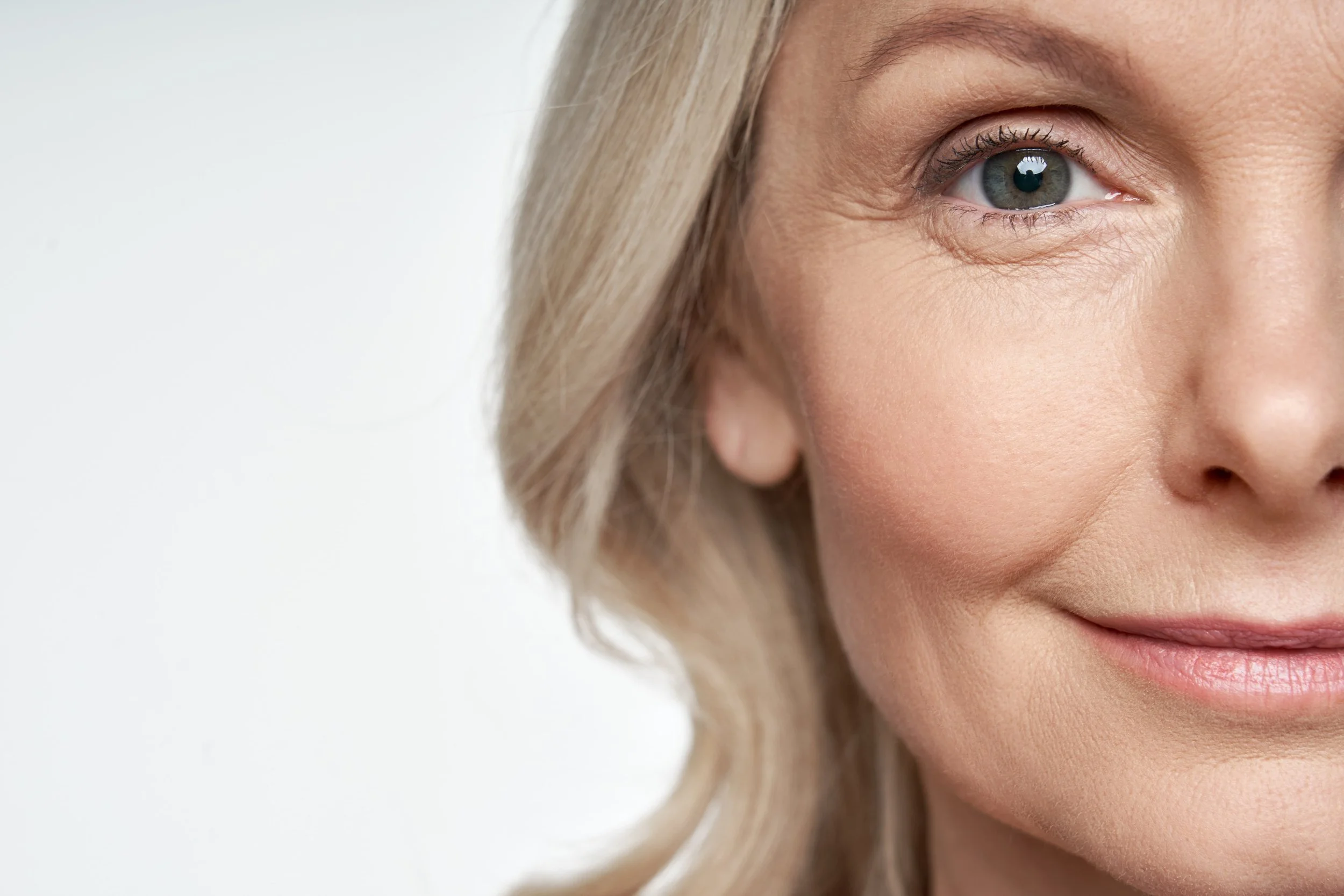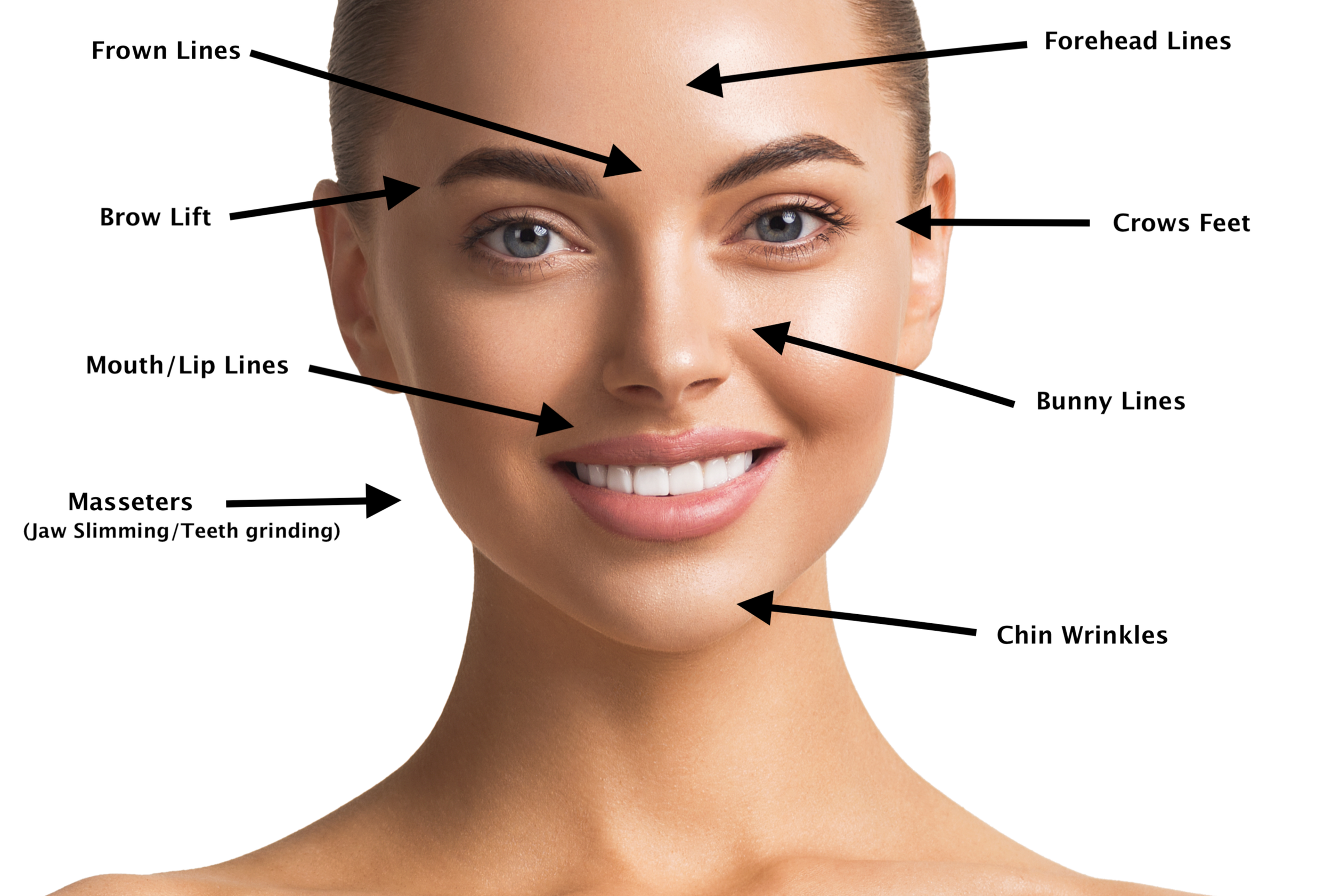Wrinkles
Wrinkle Treatment
Muscle relaxant is one of the most common treatments aimed at reducing the appearance of wrinkles. It can be used on many areas of the face including eye wrinkles, frown lines, forehead lines, brow lifting, lip lines, lip eversion, chin wrinkles, gummy smile, face slimming, platysmal bands, and more.
How does Muscle Relaxant work?
Muscle relaxants work via temporarily relaxing certain muscles in the face that are producing wrinkles. The product works via blocking the message from the nerve to the muscle, reducing the amount of contraction of that muscle. This causes a reduction in the appearance of lines/wrinkles.
WRINKLE TREATMENT AREAS
FAQs
What is the best age to start muscle relaxant?
Muscle relaxant can be commenced at any age. In younger age groups, it is used to prevent the signs of ageing through minimising and slowing the development of fine lines and wrinkles. In the middle to older age groups, it can be used to reverse the signs of ageing through softening already established fine lines and wrinkles. In some people with deeper and more stubborn wrinkles, the addition of other treatments (including facial contouring, biostimulators, and skin needling) can further aid in the reduction of wrinkles.
How long does muscle relaxant last?
Timeline after muscle relaxant treatment:
At 2-7 days the muscle begins to relax and lines begin to start reducing
At 2-3 weeks the maximal effect is achieved
From 3 weeks onwards the effect slowly begins to start wearing off
Results last 3 months in the majority of individuals (some people have longer or shorter results)
Most patients choose to have re-treatment every 3 months, however this varies between patients. Males, exercisers and those who are more muscular may tend to require larger doses and more frequent doses.
Is muscle relaxant safe?
Muscle relaxant is a medical treatment prescribed by a doctor and therefore does have risks associated. In terms of non-surgical cosmetic treatments, muscle relaxant is generally considered to be the lowest risk procedures.
The risks and side effects may include:
Bruising, bleeding or swelling at injections sites
Headache post injection
Infection (uncommon)
Allergic reaction (uncommon)
Muscle droop (i.e eyebrow/eyelid droops) (Minor and temporary - uncommon)
Blurred vision (rare)
Swallowing and breathing problems (rare)
What areas are suitable for treatment?
Muscle relaxant can be used on many areas of the face including:
Eye wrinkles/crows feet
Frown lines
Forehead lines
Brow lift
Jaw slimming/masseters
Temporalis muscle (for headaches)
Bunny lines
Lip flip or gummy smile
Mouth/lip lines
Chin wrinkles
DAOs - To minimise the down-pulling at the corners of the mouth
Nose tip lift
Nefertiti lift
Platysmal bands (neck bands)
Trapezius muscle
Calf Slimming
Excessive sweating (underarms, hands, feet)
Is the procedure painful?
The pain is minimal and over quickly. A small sting occurs due to the needle.
Is the procedure quick?
The procedure itself takes about 10 minutes, but at your appointment you will need to take photos, discuss the procedure and risks, and sign a consent form. Patients can expect to be at the clinic for about 30-45 minutes depending on the treatment.
What is the price of treatment?
Unfortunately due to TGA regulations, prices can no longer be written on the website. However, all costs will be discussed at your appointment prior to proceeding with treatment.
What are the benefits of muscle relaxant?
Non-surgical
Fast and effective
Minimal discomfort
Require little to no recovery time
Reduces the appearance of wrinkles and fine lines
Aids in the prevention of ageing skin
What are the contraindications to muscle relaxant?
Contraindications to anti-wrinkle injections include:
Individuals with known hypersensitivity to any component of the product.
Individuals diagnosed with myasthenia gravis or with Eaton Lambert (myasthenic) syndrome.
Individuals with any signs of infection at the proposed injection site.
Individuals who are pregnant, breastfeeding, or trying to conceive



